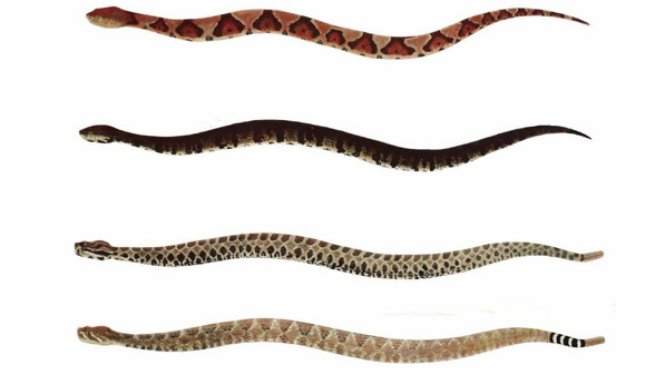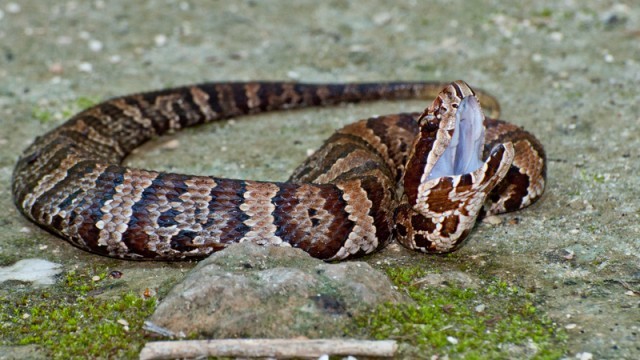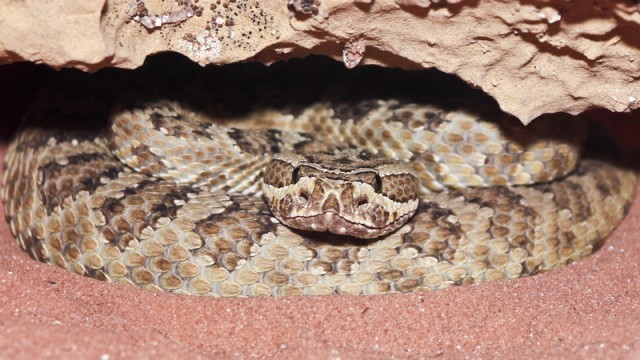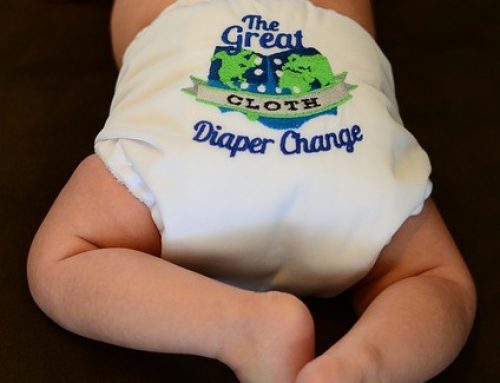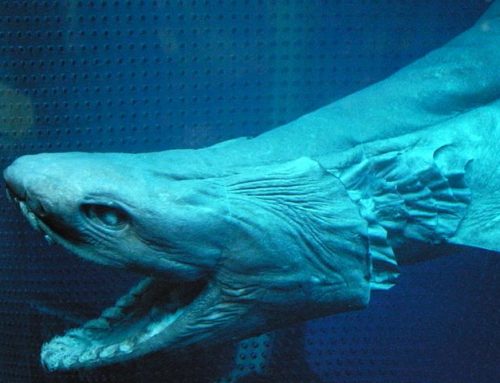Cottonmouth
Cottonmouth snakes are reptiles you definitely don’t want to encounter because they are highly venomous. Most cottonmouth snakes live in the southeastern United States from southern Virginia to Florida and even Texas. Water moccasins, which is another name for the cottonmouth snakes, tend to swim in drainage ditches, edges of ponds, lakes, streams, and the like, so if you’re ever near water it’s best to be careful. They also can bite underwater as well, so keep that in mind.
Cottonmouth snakes are approximately 3-4 feet in length and are patterned similar to the wide-banded copperhead, but the colors are not as reddish. When a cottonmouth snake is approached they tend to open up their mouths widely, revealing the white lining of the mouth. That’s why they’re known as cottonmouth snakes. They’re known to be fairly vicious, so be careful if you ever encounter one in the wild.
Massasauga
The massasauga snake is a smaller snake, which makes it more challenging to spot. However, this snake happens to be endangered in some states, which makes it more difficult to come across one. They are endangered in Iowa, Minnesota, Missouri, Illinois, Indiana, New York, Wisconsin, and a few other states.
Even though they’re hard to come across doesn’t mean they don’t show up, however. If you were to come across this snake remember that it is small yet deadly. The venom can do some serious damage to a person, so you would need to get help right away.
This snake is approximately 24-27 inches in length and is found in open fields and rocky outcroppings. It is the “prairie rattler” of eastern Kansas and they can look quite docile but as I already mentioned, their venom is very toxic. When aroused this snake can strike with a fury and the rattling is not very loud, so it’s best to keep your eyes open and listen carefully.

